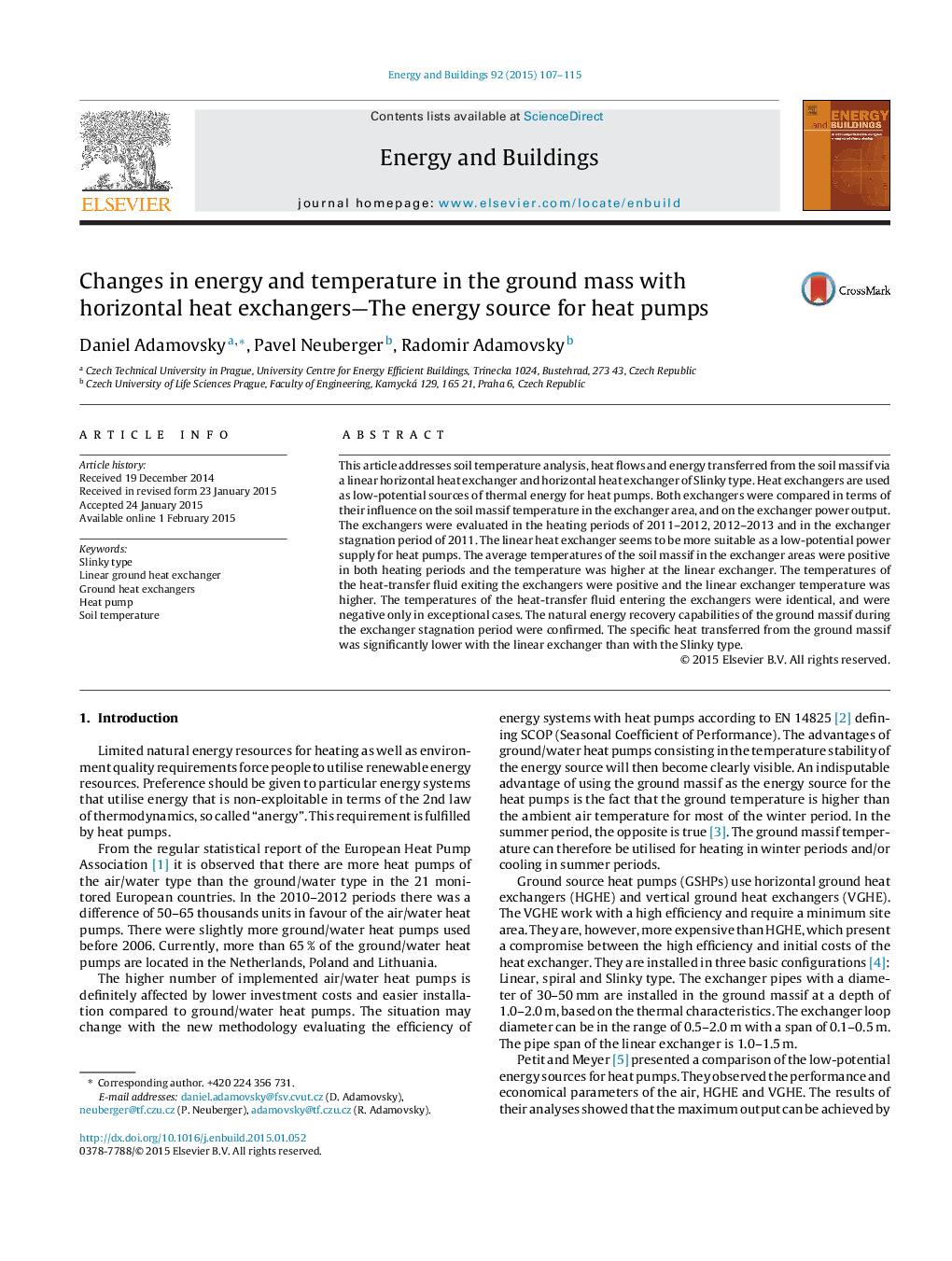| Article ID | Journal | Published Year | Pages | File Type |
|---|---|---|---|---|
| 6732037 | Energy and Buildings | 2015 | 9 Pages |
Abstract
This article addresses soil temperature analysis, heat flows and energy transferred from the soil massif via a linear horizontal heat exchanger and horizontal heat exchanger of Slinky type. Heat exchangers are used as low-potential sources of thermal energy for heat pumps. Both exchangers were compared in terms of their influence on the soil massif temperature in the exchanger area, and on the exchanger power output. The exchangers were evaluated in the heating periods of 2011-2012, 2012-2013 and in the exchanger stagnation period of 2011. The linear heat exchanger seems to be more suitable as a low-potential power supply for heat pumps. The average temperatures of the soil massif in the exchanger areas were positive in both heating periods and the temperature was higher at the linear exchanger. The temperatures of the heat-transfer fluid exiting the exchangers were positive and the linear exchanger temperature was higher. The temperatures of the heat-transfer fluid entering the exchangers were identical, and were negative only in exceptional cases. The natural energy recovery capabilities of the ground massif during the exchanger stagnation period were confirmed. The specific heat transferred from the ground massif was significantly lower with the linear exchanger than with the Slinky type.
Related Topics
Physical Sciences and Engineering
Energy
Renewable Energy, Sustainability and the Environment
Authors
Daniel Adamovsky, Pavel Neuberger, Radomir Adamovsky,
